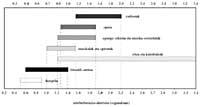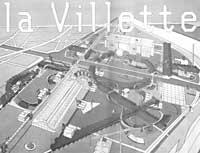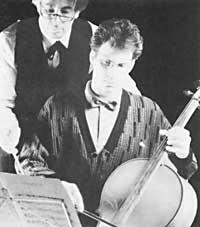Music rooms: design and acoustic crossing
1990/09/01 Bardino von, K. Iturria: Elhuyar aldizkaria
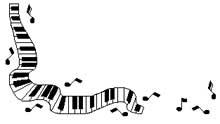
The opening of the new concert hall is planned. How will the room offer the atmosphere? Comfortable and warm? and the quality of music? These are the questions that are always asked. The answers, however, usually do not exist great consensus. For some it is very “cold”, since the room does not do it properly.
For others it can be very “confusing”, because reverberation is inadequate for music performed by the symphony orchestra, etc. Aesthetic judgments have never completely coincided. However, science has also advanced a lot in this field in recent years and you can predict the sound quality of a theater, opera or symphonic concert in a room already only in plane.
What do you need to ask a music room for? Respond appropriately to music. Therefore, we must define what this suitability consists of. You will be asked for clarity, that is, to “understand” easily, as words are usually collected in a lecture.

But that doesn't mean coldness. Music has to grab the costume, that is, reverberations have to “calm” the music. From here it follows that this suitability has minimum and maximum levels in terms of reverberation. The next feature is the intensity level. The pianissimos should be heard clearly, but in the next beat the orchestra faces harshly without suffering the ears. Music has to surround the listener. The music that gives the feeling that it comes from a hole will not make us enjoy much.
The acoustics expert must translate all these features to physically measurable physical parameters. Keep in mind that nowadays the music lover can have very good devices to play music in his own home, so when listening to live music will not easily settle for worse quality sounds.
One of the keys is in reverberation
We have said that reverberation should be between a minimum and a maximum for sound quality to be good. It is an excessive reverberation, for example, that makes piano concerts invisible in the church.

But what is reverberation? Reverberation time is the parameter that interests us and is measured as the time necessary to lose a sound intensity of 60 decibels after the emission of the sound source. In other words, a time of up to 10 6 times the ratio between the initial and final energies. Losing 60 decibels is not always possible.
To do this the initial sound needs about 95 decibels in a room with a background of 35 decibels (very quiet room) and that intensity is the level of the fortissier of the orchestra. For the listener, however, the important thing is the time of loss of the first ten decibels. In practice, the loss of 20-30 decibels produces the sensation of this effect. The initial part of the slope of the curve representing the loss of decibels is therefore the most important.
The simplest way to explain reverberation is geometric acoustics. The sound waves that reach a point have traveled a different route from the fountain and the room. In addition to the direct sound, we also collect the reflected sounds, that is, the waves that are reflected in the walls and other elements of the room. The time interval between direct and reflected sounds is due to differences between paths. Sabine's formula indicates that reverberation increases depending on the size of the room and decreases depending on the absorption of the walls.

The frequency of sound also has a lot to do with it. We support longer reverb times than for low frequencies.
When the human ear receives the sound it behaves with a small inertia. That is why it is assumed that the waves reflected in the first 80 milliseconds correspond to the straight wave. From there reverberations. But if after those 80 milliseconds comes a loose reflection and a large amplitude, that is echo. The echo, of course, is harmful and should be completely avoided in a room.
Each point in the room has its own ultrasound. In it all direct sounds and reverberations are collected. At one time it was almost impossible to do these echograms, as it was very difficult to read the sounds corresponding to those points. The use of the new signal processing techniques that are known today greatly facilitates the collection of data on the quality of the room.
At present, only the project can be tested. Special models are used for this purpose. Reducing dimensions and increasing frequencies can predict how the actual response of the room will be. But these models are very expensive and there is another drawback: it is very difficult to properly simulate the absorption of the walls.
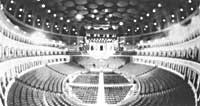
Computing has also collaborated in this field. Until now, only reflexes were taken into account, since it was not possible to make calculations taking into account all reflexes. Now, through special programs, it is possible to perform much more complex calculations. And there have already been built rooms designed with the help of programs such as the opera of Bastille in Paris.
Finding the right solution
In times when these powerful technical means were not in their hands, very beautiful and suitable rooms were built. The first closed rooms were the private classrooms of the palaces. These rooms were of small size and by the taste of then had a great decoration on ceilings and walls. These decorative elements strongly reflect the sound.Considering the number of musicians and the size of the room, the quality of the music heard in these rooms was good. They are followers of those first rooms. Rectangular concert halls of the 20th century. One of the characteristics of these rooms is the existence of long and narrow balconies on the walls. This is the Vienna Musikverein and Boston Symphony Hall. These rooms are shaped like a shoe box.
XIX. Throughout the twentieth century the symphony orchestra grew and with it the halls needed more and more size, both for musicians and to gather an increasingly large audience. The Royal Albert Hall in London was back then. Their goal was to gather five thousand people, which led them to test the elliptical plant. The results, at least acoustically, have been regrettable and subsequently it has been necessary to make a series of adaptations to correct the errors.
Rectangular rooms also have a problem. From all seats the orchestra does not look good and there are very uncomfortable seats, such as the sides. Keep in mind that nowadays music lovers listen to music of very good quality in their own home, so when they go to the concert, in addition to asking for sound quality, they want to see and enjoy the musicians. It has been tried to go to the design of the Greek and Roman theatres to solve it, but no good results have been obtained. They are too large rooms and the music does not reach the desired intensity.
How to get a room that combines the rich side reflections offered by the rectangular room and the visibility of the rooms in the shape of a shell? To do this they have started using the technique called Weinberg. Weinberg means vineyard: the public is divided into more than 100 seats, at different levels and separated by paretillas. Thus the listener has the feeling of being in a small and pleasant room. The Berlin Philharmonic Hall and the Acropolis opened in Nice in 1985 used this idea to ensure quality and comfort.
But this does not mean that acoustic engineering has reached its destination. Now we can predict how a symphony will be heard in a given room, knowing the plans of the room. However, this type of construction depends on many conditions, even economic, so technicians should look for the most suitable solution in each case. The room will be defined by a series of characteristics and main elements and nuances to analyze and decide between architects, decorators, scenographers, acoustic experts and responsible for the works.

Gai honi buruzko eduki gehiago
Elhuyarrek garatutako teknologia



